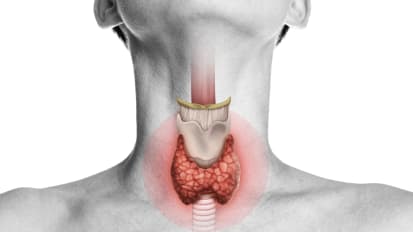Search
 Video
Video
Breast Cancer: The Latest Evidence-Based Screening, Diagnostic and Treatment Options
In this informative webinar, UCSF breast surgeon Shoko Emily Abe, MD, reviews current evidence informing breast cancer screening, diagnosis and treatment Video
Video
Hematuria and Other Common Urinary Concerns: A Guide for PCPs
Blood in urine is common – and stressful for patients, who want an immediate diagnosis. Video
Video
High Risk for Breast Cancer: Methods and Schedules to Ensure Optimal Screening
Hematologist-oncologist Elham Vosoughi, MD, starts with an update on breast cancer stats, noting that incidence in the United States is increasing by 1% every year – with an even sharper rise for women under 50. Video
Video
UCSF Cancer Grand Round Series: 2024 Best of the Year
UCSF Health and John Muir Health specialists in treatments for numerous cancers – including breast, lung, bladder and colon cancer – unpack last year's influential trials, several of which established new standards of care for specific patient populations. Video
Video
Diffuse Idiopathic Skeletal Hyperostosis: A Common Cause of Spinal Pain
This practical presentation from physical and pain medicine specialist Peter I-Kung Wu, MD, PhD, MPH, takes a deep dive into diffuse idiopathic skeletal hyperostosis (DISH), a problem that particularly affects men over 50, bringing stiffness and limiting range of motion Video
Video
Keeping a Luster in the Golden Years: What Geriatricians Bring to Aging Patients
The complex and broad-ranging needs of older adults can be difficult to meet in the primary care setting – or by specialists seeing them for a single disorder Video
Video
Eating to Stay Strong: Heart-Health Facts and Real-Life Tips for Older Patients
When patients notice muscle loss and weight gain – and start worrying about their cholesterol – they want simple, actionable advice Video
Video
Gestational Diabetes Mellitus (GDM): A Fresh Look at Health Impacts, Screening Tests & Management Tools
Having experienced GDM herself while pregnant, perinatologist Jennie Duffy, MD, understands the challenges for both patients and doctors in the quest for better glycemic control. Video
Video
A Pragmatic Update on Respiratory Infections: COVID-19 Lessons, Current Learning Opportunities and Emerging Threats
Infectious disease specialist Peter Chin-Hong, MD, presents the current state of wintertime respiratory illness, focusing on the Bay Area yet covering the reality that viruses are global travelers Video
Video
UCSF Thoracic Surgery Leaders Discuss Diagnostic and Surgical Innovations to Treat Lung Cancer and Lung Diseases
Robotic-assisted surgery at UCSF allows thoracic surgeons to perform intricate procedures with a high level of precision and dexterity, providing optimal patient outcomes. Video
Video
Making Sense of MGUS: How to Detect Plasma Cell Disorders and Assess Associated Risks
Affecting up to 5% of the U.S. population (and increasingly common with age), monoclonal gammopathy of undetermined significance (MGUS) raises the risk of multiple myeloma, but – as its full name suggests – it can be hard to say by how much. Video
Video
Solving the Mysteries of the Pelvic Floor: A Guide for Primary Care
Underdiagnosed and undertreated, loss of bladder control is a common issue that both embarrassed patients and time-pressed clinicians often hesitate to mention. Video
Video
Step Inside UCSF’s Newly Opened Pride Hall: A Cutting-Edge Hub for Orthopaedic Innovation, Research, and Education
The UCSF Department of Orthopaedic Surgery is pleased toshare a new video tour of the state-of-the-art Orthopaedic Floors of Pride Hall, part of the Orthopaedic Trauma Institute at Zuckerberg San Francisco General Hospital. Video
Video
UCSF Musculoskeletal Center is Redefining Pain Management and Non-surgical Treatments for Complex Conditions
At the UCSF Musculoskeletal Center, innovative research is changing how we approach musculoskeletal conditions. By going beyond traditional treatments and exploring cutting-edge technology, the center is pioneering new solutions to complex health issues affecting millions. Video
Video
Ross Procedure for Aortic Valve Disease: Why It's the Superior Option in Younger Patients
Cardiac surgeon Marko T. Boskovski, MD, MHS, MPH, provides compelling data on the ultimate failure of traditional valve replacements to support the lifespan of physically active non-elderly adults and describes the value of the Ross procedure. Video
Video
Getting Ahead of Anal Cancer: Assess Risk and Screen Appropriately to Prevent Advanced Disease
“Don’t assume it's just a hemorrhoid,” says infectious disease specialist Cristina Brickman, MD, MSCE, in her talk on protecting high-risk patients from anal and perianal cancer Video
Video
Down to Earth: Lowering Blood Pressure With Evidence-Based Natural Techniques
Taking an integrative approach, Dr. Jennifer Ashby, DAOM, MS, discusses how to educate patients on hypertension and its consequences, including by providing accessible definitions (such as for systolic and diastolic) and straight talk on the gray zone in which early-stage hypertension is often labeled as normal (even by doctors). Video
Video
Primary Care Predicaments: Myopathies, Neuropathies & Neuromuscular Conditions, Oh My!
From ALS to myasthenia gravis to Guillain-Barré syndrome, potentially aggressive neuromuscular disorders can present with a range of nebulous symptoms. Video
Video
Advances (and Uncertainties) in Oncology: Current and Future Roles of Antibody Drug Conjugates
Focusing on common bladder, lung and breast cancers, three UCSF oncologists describe how antibody drug conjugates (ADCs) are changing the treatment landscape, especially for refractory cases Video
Video
IBS Diarrhea in Primary Care: Shorter Routes to Diagnosis and Symptom Assuagement
Diarrhea related to irritable bowel syndrome is common, yet because it's a functional – not anatomical – disorder, providers frequently run more tests than necessary while patients worry and wait in discomfort. Video
Video
Degenerative Cervical Myelopathy: New Insights on a Common, Potentially Life-Altering Condition
Age-related spinal changes can be relatively benign – but they also can result in spinal cord dysfunction. Video
Video
A Novel Approach to Aching Knees: How Specialists Are Using Artery Embolization for Osteoarthritis
Many providers have grown weary of offering the same old treatments – physical therapy, steroid injections – to their patients with knee OA, an increasingly prevalent condition that accounts for more than 80% of OA-related chronic pain and disability in the U.S. Video
Video
Radiofrequency Ablation: A New Option for Benign Thyroid Nodules
Learn about a minimally invasive way to address an exceedingly common condition in this short presentation by interventional radiologist Alexander Lam, MD. Video
Video
A Handy Guide: How to Identify and Manage Common Upper Extremity Conditions
When patients present with pain, weakness or numbness in fingers, wrists or elbows, providers need efficient paths to diagnosis and initiating care.

